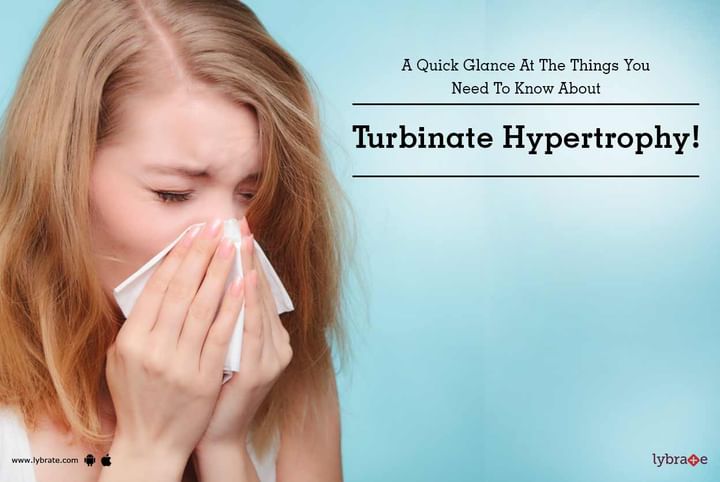A Quick Glance At The Things You Need To Know About Turbinate Hypertrophy!
Commonly referred to as nasal concha, nasal turbinates are an important structure of the nose, which is responsible for preventing the outside dust, dirt, and various other particles from entering the lungs. When these bony and spongy structures are irritated due to irritants, they become enlarged or inflamed, blocking the nasal airways, resulting in breathing difficulty called turbinate hypertrophy.
A closer look at turbinate hypertrophy
Characterized by chronic enlargement or swelling of the nasal turbinates, turbinate hypertrophy is a condition where swelled turbinates lead to serious nasal congestion, causing difficulty in breathing. Though occasional swelling and shrinking of the turbinates and the sensitive blood vessels on its mucosal membrane are normal, when this happens on a chronic basis, it requires medical attention.
Typically, such swelling happens to be temporary and resolves automatically without having to take any medications for it. However, sometimes swelling of the turbinates stays for long, giving rise conditions like turbinate hypertrophy.
Causes
Turbinate hypertrophy can be caused due to various factors, such as allergies, septum deviation, various environmental irritants, etc. While an immunological response that is triggered by the allergies leads to the swelling of these spongy parts inside the nose, irritants like cigarette smoke can also lead to the turbinates' inflammation. Sometimes when the deviation of the septum is severe, it also may result in the development of abnormal enlargement of the turbinates. Chemical irritants, hormonal changes, changes in the temperature can also cause turbinate hypertrophy.
Symptoms
Some of the very common symptoms of turbinate hypertrophy are persistent nasal blockage or congestions, recurring sinusitis or sinus infections, moderate to severe difficulty in breathing on both or one side of the nose. Frequent nosebleeds and snoring are also considered to be some of its other symptoms.
Available Treatment Options
When it comes to treating turbinate hypertrophy, there are various treatment options available, both surgical and non-surgical. While the allergy medications, various nasal sprays help in controlling the swelling of the turbinates, avoiding environmental irritants can help in preventing turbinate hypertrophy. Then there are the different surgical methods, such as rhinoplasty, septoplasty, that can help in offering a longer cure to such nasal breathing problems. However, it is only based on the root cause behind the turbinate hypertrophy and the condition of the patient that the ideal treatment can be determined by an ENT specialist.
When you suffer from obstruction in the nasal airway, it is advised to contact an ENT specialist to find the actual cause behind it and obtaining necessary treatments. Because, when it comes to breathing, ignoring any issues with it can lead to a deteriorated nasal problem in the long run. In case you have a concern or query you can always consult an expert & get answers to your questions!



+1.svg)
